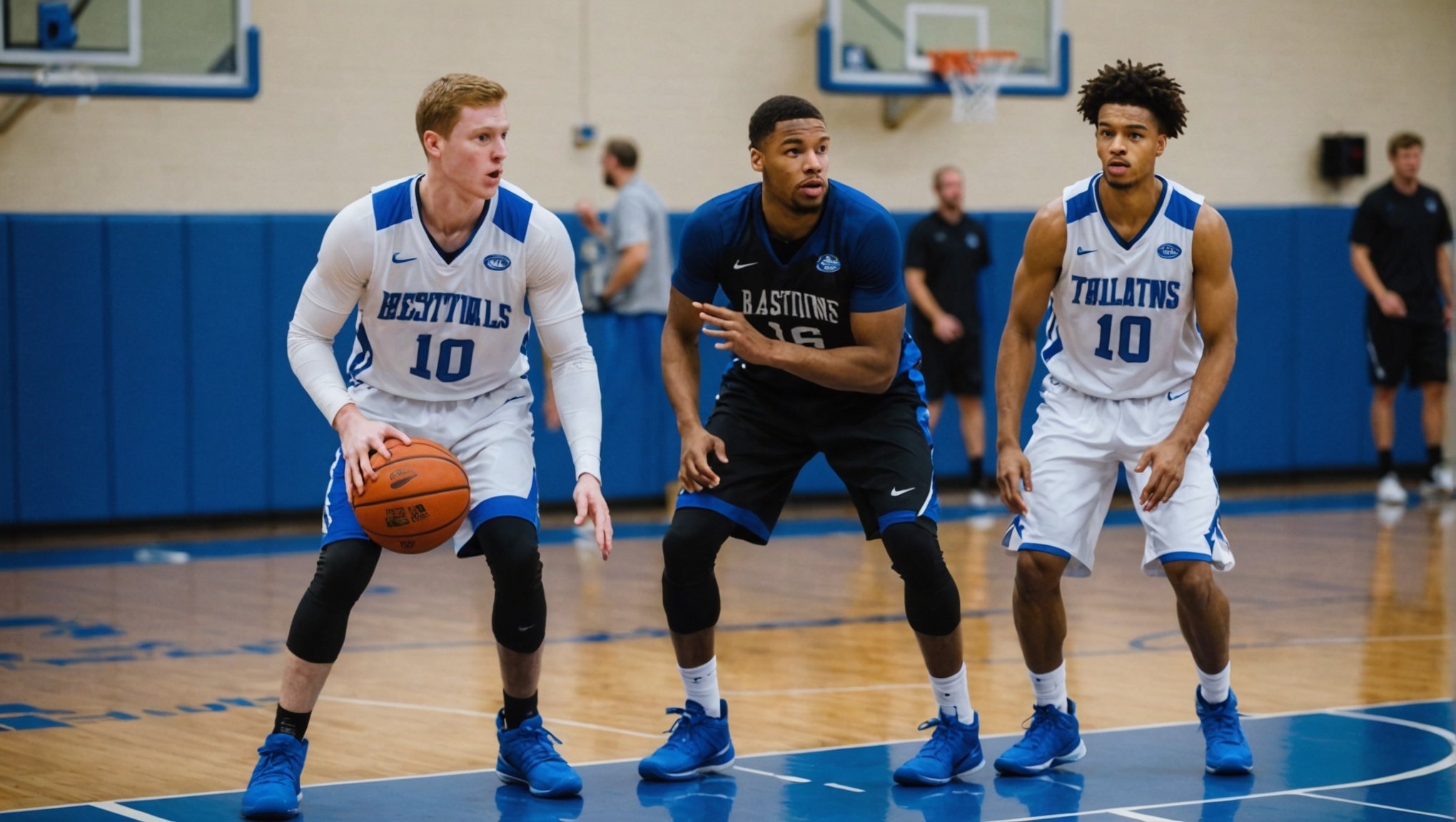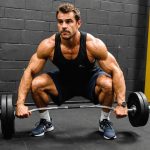Importance of Off-Season Conditioning
Off-season training is crucial for athletes aiming to maintain high levels of performance throughout the year. This period allows players to concentrate on foundational aspects of their fitness without the pressure of competition. It is a valuable opportunity for athletes to engage in conditioning strategies that enhance their endurance, strength, and agility, all contributing to long-term player performance.
Conditioning strategies play a key role in injury prevention, as they help athletes build resilience against the physical demands of their sport. By focusing on strength development and flexibility, players reduce the risk of strains and sprains. Moreover, skill improvement is another notable benefit. By honing specific techniques in a less pressured environment, athletes can fine-tune their abilities for better gameplay during the competitive season.
This might interest you : Unlocking Precision: Enhancing Shot Accuracy for UK Netball Teams Through Advanced Analytics
Recovery is equally important in off-season training. Giving adequate time for muscle repair and mental relaxation can significantly boost overall player conditioning. Recovery periods allow athletes to avoid burnout and maintain motivation, setting the foundation for a successful season ahead. Overall, a well-structured off-season conditioning programme is instrumental for achieving peak performance, preventing injuries, and fostering the continual development of skills.
Designing a Comprehensive Conditioning Program
Designing an effective conditioning program requires a deep understanding of various training methodologies and a clear program structure to optimise performance and minimise injury risk. A well-structured program is tailored to the unique needs of each athlete, reflecting their strengths and weaknesses, which is crucial for maximising potential.
Topic to read : Unlocking the Science of Speed: Leveraging Biomechanics for Enhanced Fast Bowling Techniques in UK Cricket Coaching
Assessing Player Needs
Critical to any conditioning program design is the initial assessment of player needs. This involves analysing specific positions and individual physiological profiles to identify bespoke requirements. A thorough assessment considers both athletic capabilities and limitations, providing a foundation for a targeted strategy.
Setting Goals
Establishing clear goals is fundamental within a comprehensive conditioning program. These should include both short-term and long-term objectives. Short-term goals focus on immediate performance improvements, while long-term goals aim for sustainable development. This dual approach ensures continuous progression and optimal performance levels over time.
Structuring Workouts
The program structure should integrate a variety of training methods to maintain athlete engagement and adaptation. Workouts must balance intensity with recovery to ensure consistent improvements and prevent overtraining. Incorporating varied exercises addresses all facets of athleticism, from strength to agility, adjusting to each player’s evolving needs.
Ultimately, a successful conditioning program hinges on tailored designs, clear goal-setting, and a dynamic workout structure, maintaining engagement and encouraging personal growth.
Physical Fitness Components for Basketball Players
To excel on the basketball court, players require a well-rounded physical fitness foundation. This comprises various components like strength training, cardiovascular fitness, and flexibility.
Strength Training Regimens
Strength training is vital for enhancing a player’s power and agility. A well-structured regimen should include exercises like squats and deadlifts to target the lower body, essential for jumps and sprints. Upper body strength can be improved with bench presses and pull-ups, aiding in defending and shooting.
Cardiovascular Conditioning
A basketball player’s cardiovascular fitness is equally important. Engaging in endurance training tailored for the demands of basketball ensures players maintain high energy throughout games. Interval training, which mixes high-intensity bursts with recovery periods, mirrors game conditions, improving both aerobic and anaerobic systems. This type of training increases a player’s stamina, ensuring they’re effective throughout a match.
Flexibility and Mobility Work
Incorporating flexibility routines into regular training is crucial for injury prevention. Stretching, particularly after workouts, helps maintain good muscle health. Dynamic stretches before playing and static stretches afterward enhance joint mobility and muscle elasticity, reducing the risk of strains. Emphasizing flexibility allows players to move swiftly and efficiently on the court, reflecting a well-rounded approach to physical fitness.
Skill Development Integration
Balancing skill development with physical conditioning is crucial for athletes. Basketball drills are pivotal in this integration, enhancing not only a player’s technical abilities but also their overall fitness. Structured technical training ensures that skills are honed efficiently.
Incorporating Drills in Conditioning
When developing skills, incorporating specific basketball drills into conditioning routines is essential. Not only do these drills target core skills, but they also improve cardiovascular health and endurance. Targeted exercises such as dribbling while sprinting or shooting after a series of vertical jumps can effectively blend skill development with physical conditioning.
Game-Specific Skill Training
Training should mimic the intensity and context of actual games. Game-specific skill training focuses on the scenarios players face in matches. Implement drills that reflect real game situations, such as defending under pressure or executing plays that rely on quick decision-making. This strategic approach fosters better overall performance during actual games.
Evaluating Skill Progress
Tracking and evaluating skill progress is vital. This evaluation should focus on how well an athlete’s skills improve alongside their fitness levels. Establish systems that record workouts and skills, providing a clear picture of development. Regular assessments help identify areas requiring additional focus and ensure a balanced improvement across both technical training and basketball drills.
Injury Prevention Strategies
Injuries can be a significant setback for athletes, so prioritizing injury prevention and athlete safety is essential. Implementing effective rehabilitation techniques not only aids in recovery after an injury but also helps in reinforcing overall physical resilience.
Key Prehabilitation Exercises
Incorporating specific prehabilitation exercises into an athlete’s routine can significantly reduce the risk of common basketball injuries. Stability exercises, such as single-leg balance drills, strengthen joints and improve an athlete’s overall equilibrium. Flexibility routines, including dynamic stretches focusing on the hamstrings and quadriceps, enhance muscle elasticity, reducing strain during intense play.
Monitoring Player Health
Keeping track of players’ physical conditions is an ongoing process crucial for preventing injuries. Employing wearable technology allows for real-time monitoring of athletes’ vitals and fitness levels throughout training. Regular assessments help in identifying potential risk factors and adjusting training regimens accordingly, ensuring athletes remain at their peak performance.
Recovery Protocols
Effective recovery is pivotal in maintaining high athlete safety standards. Establishing recovery protocols that include adequate rest, proper nutrition, and physiotherapy sessions can accelerate healing and reduce the likelihood of recurrent injuries. Techniques such as hydrotherapy and massage therapy are also beneficial in facilitating muscle relaxation and boosting blood circulation.
Seasonal Considerations for UK Basketball Teams
Understanding the unique circumstances faced by UK basketball teams requires acknowledging the seasonal adjustments necessary throughout the year. The impact of fluctuating training demands and competing schedules can shape a team’s approach to conditioning and performance.
Understanding Seasonal Demands
Training in the context of UK basketball undergoes significant variability depending on the time of year. Seasonal adjustments can help optimise performance by addressing the changing demands of the training and competitive calendar. The primary aim is to align the conditioning efforts with these demands, ensuring that both physical preparation and strategic planning are attuned to upcoming challenges.
Adjusting Training Intensity
Throughout the season, intensity must be modulated to align with the UK basketball context. This modulation ensures that athletes peak at the right time while avoiding burnout. During off-peak periods, focus on building a solid endurance base and refining technique. In contrast, higher intensity training should coincide with competitive phases, maximizing players’ capacity for optimal performance when it counts the most.
Planning for Competitions
Aligning conditioning with competition schedules is crucial. By considering these seasonal adjustments, coaches can craft training regimens that account for approaching matches and tournaments. Properly planned training schedules that factor in recovery time, peak performance periods, and strategic rest days will lead to a more consistent and competitive team throughout the season.”
Expert Insights and Case Studies
Gleaning expert opinions and understanding real-world applications can pave the path toward more effective basketball conditioning strategies.
Interviews with Coaches
Delving into insights from seasoned basketball coaches offers valuable perspectives on effective conditioning strategies. Coaches emphasise the significance of tailored conditioning programs that cater to individual team needs, focusing on flexibility, strength, and endurance. For instance, expert opinions highlighted that a mix of aerobic and anaerobic exercises ensures players maintain peak performance without compromising on agility.
Analysis of Successful Teams
An examination of UK teams that have thrived by integrating strategic conditioning programs showcases their remarkable achievements. Such case studies reveal that teams investing in regular monitoring and adaptation of their conditioning routines saw drastic improvements in performance metrics, oftentimes surpassing their competitors in endurance and stamina during matches. This approach catalyses their success on the court and underscores the utility of innovative methods.
Lessons Learned from the Field
Some key lessons learned from these field experiences include the importance of regular assessment drills and feedback mechanisms that continuously update training regimens. Case studies enforce that adopting a holistic training approach, attentive to physiological and psychological factors, optimally conditions athletes. Teams can leverage these insights, fostering a culture of excellence and resilience within their ranks.










